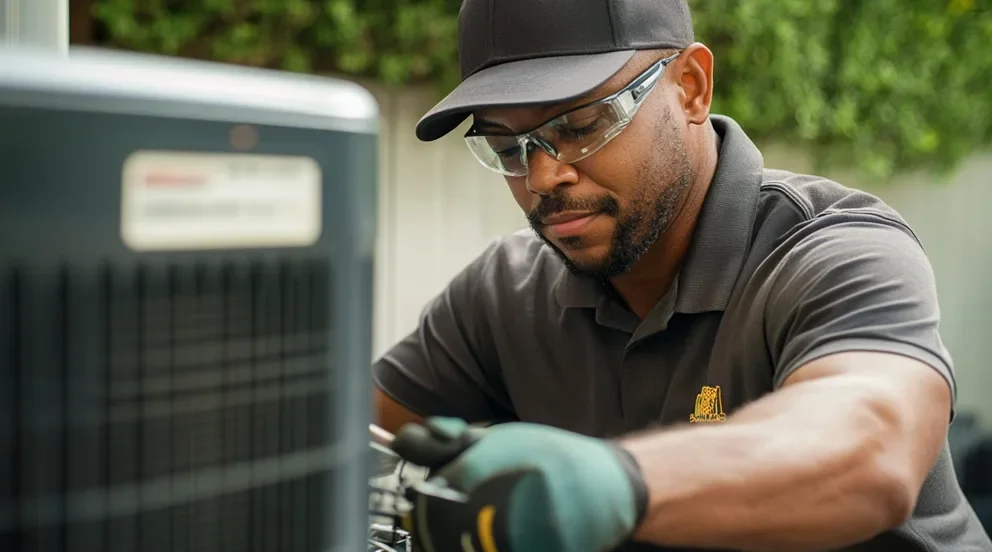Correctly setting the temperature of your refrigerator is essential for optimal performance and keeping foods safe. To adjust the settings, begin by locating the control panel for the appliance. Inside a good range of temperatures for a refrigerator is between 0°C and 3°C. Any higher will cause food to spoil quicker. Select the setting closest to 0°C. Afterward, move the freezer set to -17°C. This allows the appliance to work most efficiently and keep your food safe. Keep in mind that if the settings are too far from these temperature ranges, the unit may run more than necessary and increase energy costs. Finally, always check the door seal as this is essential for keeping energy-efficient temperatures.
The Benefits of Setting Refrigerator Controls for Optimal Performance
Setting the temperature on your refrigerator correctly is essential for optimal performance and keeping food safe. To control the settings, begin by locating the control panel. Inside the appliance, aim for a range between 0°C and 3°C. Setting the freezer closer to -17°C helps the appliance work most efficiently. If the settings drift too far from these temperature ranges, the refrigerator may run more than necessary, leading to higher energy costs. Make sure to check the door seal as well, as this is key for keeping energy-efficient temperatures. Doing so brings several beneficial results: food will stay fresher and last longer, energy costs will stay low, and the appliance will operate more effectively.
How to Locate the Control Panel and Adjust Temperature Settings
To locate and adjust the temperature settings of your refrigerator, begin by looking for the control panel. This is typically located inside the appliance and often includes both a refrigerator and freezer control. Aim for a range between 0°C and 3°C for the refrigerator and -17°C for the freezer. Be sure to monitor the settings as they can drift far away from the desired temperature range, leading to higher energy costs. Lastly, don’t forget to check the door seal for optimal energy efficiency. This will help keep your food fresh while keeping energy costs low.
The Role of the Door Seal in Refrigerator Performance
The door seal of a refrigerator plays an important role in optimal performance and energy efficiency. A good door seal helps to keep cold air in and warm air out, regulating the temperature of the refrigerator. Without it, the temperature can swing too far away from the desired range. Additionally, a faulty door seal can make the appliance run more often than necessary, wasting energy and increasing energy costs. For optimal performance, always inspect the door seal for any damage or signs of deterioration. This is an essential part of keeping your refrigerator running efficiently.
Guidelines for Finding the Best Temperature Ranges in a Refrigerator
Finding the best temperature ranges for a refrigerator is essential for optimal performance and food safety. To adjust the settings, begin by locating the control panel inside the appliance. Inside a good range of temperatures for a refrigerator is between 0°C and 3°C. For the freezer, aim for -17°C. Should these ranges drift too far, it may cause the unit to run more than necessary, leading to higher energy costs. Finally, don’t forget to check the door seal which contributes to energy efficiency. Doing so allows you to keep your food safe, prolong its freshness, and ensure the appliance runs efficiently.
The Effects of Incorrectly-Set Refrigerator Temperature Controls
Incorrectly setting the temperature controls of your refrigerator can have serious effects. If the refrigerator setting is too high (above 3°C), food can spoil quicker. For the freezer, if the setting is too low (below -17°C), the appliance may run more than necessary and increase energy costs. That’s why it’s important to check the control panel inside the appliance and find the optimal temperature ranges for the refrigerator and freezer. Additionally, inspecting the door seal regularly for any damage will keep energy-efficient temperatures maintained and help keep energy costs low.
Safety Concerns Regarding Poor Temperature Regulation for Refrigerator Contents
Poor temperature regulation in a refrigerator can have serious safety concerns. If the temperature of the refrigerator is above 3°C, food can spoil quickly or become unsafe to eat. For the freezer, if the temperature is lower than -17°C, it may increase energy costs. That’s why it’s important to properly adjust the settings to the optimal temperatures of 0°C and -17°C respectively. Additionally, a faulty door seal can lead to lower temperatures and should be checked regularly. Doing so helps to keep food safe, prolong freshness, and maintain low energy costs.
Steps to Take When Troubleshooting Issues with Refrigerator Temperature Settings
Troubleshooting issues with refrigerator temperature settings can be tricky. To begin, locate the control panel of the appliance and make sure the settings for the refrigerator and freezer are between 0°C and 3°C and -17°C respectively. If not, set them to the optimal range. Next, inspect the door seal for any damage or signs of deterioration. Lastly, monitor the unit for any changes, as incorrect settings can lead to higher energy costs. Taking these steps will help you keep your food safe, prolong its freshness, and maintain low energy costs.
How to Avoid Unnecessary Energy Usage with Refrigerator Temperature Adjustments
To avoid unnecessary energy usage of your refrigerator, adjust the settings accordingly. Start by locating the control panel of the appliance. Inside, keep the temperature of the refrigerator between 0°C and 3°C and the freezer at -17°C. Any temperature that drifts too far from these ranges could cause the refrigerator to run for longer and raise energy costs. Additionally, always check the door seal for any damage. A faulty door seal can also make the unit run more than necessary. Taking these steps will help to ensure optimal energy efficiency and keep energy costs low.
Strategies for Regularly Monitoring Refrigerator Temperature Controls and Resetting When Necessary
Monitoring the temperature settings of your refrigerator is key to keeping food safe and energy costs low. To do so, begin by locating the control panel and checking the refrigerator and freezer settings. Aim for a range between 0°C and 3°C for the refrigerator and -17°C for the freezer. If the settings drift too far, reset them to their optimal ranges. Then, inspect the door seal for any signs of damage. Lastly, regularly monitor the unit for any changes. Keeping an eye on these temperature settings helps your refrigerator to perform efficiently while keeping food fresh and energy costs low.
Key Takeaway: Why Setting Refrigerator Controls for Optimal Performance Is Essential
Setting the temperature of your refrigerator correctly is essential for optimal performance and keeping food safe. To control the settings, begin by locating the control panel. Inside the appliance, aim for a range between 0°C and 3°C for the refrigerator and -17°C for the freezer. Monitor the settings as they can drift far away from the desired temperature range and lead to higher energy costs. Lastly, check the door seal for optimal energy efficiency. Doing so brings several beneficial results: food will stay fresher and last longer, energy costs will stay low, and the appliance will operate more effectively.



